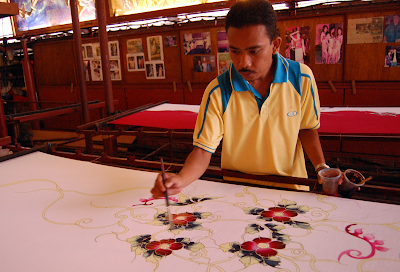Featured
- Get link
- X
- Other Apps
WHAT IS ACTIVEWEAR?
ACTIVEWEAR.
The high-performance sportswear intended for climbing, sailing, and hiking that grew popular among urban youth throughout the 1970s gave birth to the apparel known as activewear in the early 2000s.
By the 1980s, similar utilitarian fashions had spread throughout North American college campuses, and sneakers were being worn with suits, bags were being worn instead of briefcases, anoraks were being worn with deck shoes, and sweatshirts were being worn with khaki trousers or jeans.
Activewear became a staple of the contemporary wardrobe as it grew to symbolize the athletic elegance of city dwellers and coed college life.
While activewear is generally thought of as a new trend, the mix of streetwear, travel gear, and athletics is not.
Bonnie Cashin, Claire McCardell, and Vera Maxwell, American designers, modernized clothes made for travel, leisure, and sport with remnants of high fashion in the 1930s and 1940s.
By creating easy-fit, loosely structured clothes in materials like wool, denim, and calico, the designers made utility a statement of style.
An overcoat with a built-in purse was one of Cashin's trademark pieces, while Maxwell created a jacket with built-in bags rather than pockets.
Such garments were designed as urban utilities that evolved into wearable baggage, broadening the attractiveness of clothes that could optimize clothing performance while also allowing the body to carry essentials with ease.
Activewear has been defined by bulky, loose-fitting clothes for decades.
Activewear grew increasingly tailored and form-fitting as the body-conscious fashions of the 1990s gained hold, yet it continued to suit the active leisure activities of city residents.
Rollerbladers, inner-city bikers, and speed-walking pedestrians all wore smart essentials that let them to move freely and offered protection from the elements.
Professionals began commuting to work in sneakers and multipurpose outerwear as mobility and flexibility became important concerns.
Many were constructed with adjustable collars and sleeves that could be changed to weather changes, or with detachable hoods that converted overcoats into raincoats as they were buttoned or zipped into position.
Hoods, zip-front seams, windproof jackets, pouch pockets, Velcro, and magnetic fastenings, as well as drawstrings fitting at the neck, sleeve, and waist to replace zippers and buttons, have become part of the daily fashion language.
As the 1990s came to a conclusion, Maharishi popularized these tailoring features on the catwalk, combining them with parts of occupational uniforms to create a distinctive military look.
Throughout the 1990s, the popularity of activewear grew, indicating that the conventional segmented wardrobe could no longer meet changing social and cultural demands.
Because the style was such an important element of the contemporary wardrobe, it promoted the migration of materials and technology across disciplines, allowing forward-thinking fashion designers to use high-tech textiles in their designs.
The multipurpose, dynamic characteristics of activewear seemed to signal the advent of twenty-first century fashion in clothes that combined fashion with high-performance athleticism.
CP Company, Mandarina Duck, Issey Miyake, Vexed Generation, and Final Home were among the first to use sophisticated textile technology to produce an edgy, urban look in designs that were both durable and fashionable.
CP Company led the race with designs that went beyond fashion; their overcoats blew up into armchairs, and their parkas puffed up into one-person tents or inflated into air beds.
The clothes are changed by the wearers, implying that technical ability is needed beyond the moment of purchase.
Similarly, Mandarina Duck's "Jackpack" incorporated the straps, fastenings, and pockets of a backpack into the fabric of the jacket's back panel.
The construction of the jacket was entirely changed by taking it off, turning it inside out, and folding the sleeves, lapels, and fabric panels into an inside bag.
Other zipped pockets in the bag may be used to store shopping or other pieces of clothes.
Issey Miyake created cotton coats with a nylon raincoat hidden inside for his "Transformer" series.
Vexed Generation, a British design team, created clothes made of bullet-proof and slash-proof fabrics to combat the difficulties of contemporary living.
Their clothes included many of the functions associated with protective gear, combining high-performance materials with cutting-edge street style.
They used temperature-regulating fabrics developed for athletics in their winter jackets, eliminating the need for cumbersome layering.
Vexed Generation developed outerwear that could act as personal thermostats by lining jackets and overcoats with phase-change materials like Outlast.
When the body temperature rises, tiny paraffin capsules in phase-change textiles expand, absorbing the heat.
When the body's temperature falls below 98.6 degrees Fahrenheit (37 degrees Celsius), it contracts, releasing the heat it has accumulated.
Vexed Generation developed a comfort zone for the user by keeping a constant temperature in a shifting climatic environment.
The Final Home jacket, designed by Japanese designer Kosuke Tsumura, extends the mobility of athletics into an expression of architecture, claiming that clothing is the ultimate shelter.
The translucent, multipurpose jacket is a nylon sheath with forty-four zipped pockets that may be stuffed with heated materials for additional insulation or used to cushion the user when sitting or reclining.
The jacket, according to Tsumura, serves as a protective shell that allows the user to endure severe weather conditions.
Tsumura recommends filling some of the pockets with survival food and practical supplies in addition to personal goods and accessories, obviating the need for backpacks, shopping bags, baggage, and even tool kits.
As more people turn to activewear to balance the demands of contemporary life, the lines between street clothing, business dress, and athletics are becoming more blurred.
Comfort, flexibility, and protection have become essential to all aspects of the contemporary wardrobe, therefore high-performance designs and technologically sophisticated fabrics are common to all three.
Activewear is proven to be one of the fastest moving sectors of fashion in the early 2000s, as clothes are updated with innovations that go beyond traditional apparel.
Each season, new tailoring methods drastically simplify the patterns, and future sportswear fashions promise such elegance that the gym will probably be the last place to see them.
Find Jai on Twitter | LinkedIn | Instagram
- Get link
- X
- Other Apps















